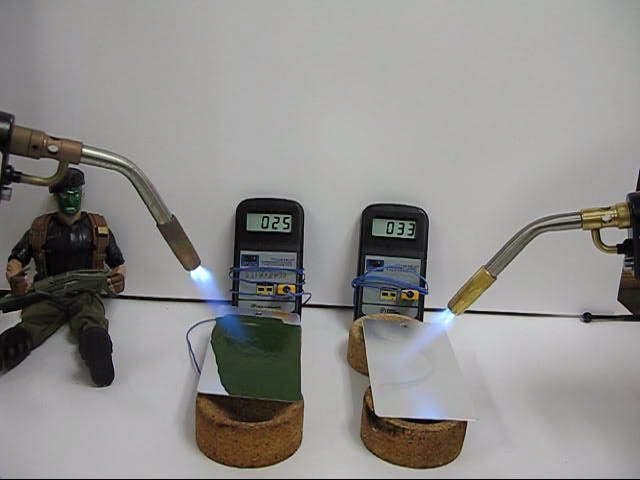How Face Paint Could Protect Soldiers' Faces

Future camouflage face paint might not only hide soldiers from the enemy, but it could also shield them from the searing heat of bomb blasts, researchers say.
Bomb detonations generate two dangerous blasts, explained researcher Robert Lochhead at the University of Southern Mississippi.
"First comes a blast wave of high pressure that spreads out at supersonic speeds and can cause devastating internal injuries,” Lochhead said. “A thermal blast follows almost instantaneously. It is a wave of heat that exceeds 1,112 degrees Fahrenheit (600 degrees Celsius) — that's as hot as a burning cigarette. The thermal blast lasts only two seconds, but it can literally cook the face, hands and other exposed skin."
To protect soldiers from bombs, scientists endeavored to develop a material that can get smeared on faces like sunscreen, leaving behind a coating that is thinner than a sheet of paper but can still protect against intense heat.
"We were able to achieve proof of concept and a working prototype in relatively short time," Lochhead told InnovationNewsDaily.
[Researchers Look to Octopuses for Ultimate Camouflage]
In lab experiments, their invention is protective well beyond the two-second heat-wave threat from bombs — it often safeguarded the face and hands for up to 15 seconds before its own temperature rose to the point where a mild first-degree burn might occur. In some tests, the heat-resistant makeup even protected for up to 60 seconds, which can help defend soldiers and firefighters from fires.
Sign up for the Live Science daily newsletter now
Get the world’s most fascinating discoveries delivered straight to your inbox.
A challenge the researchers faced was avoiding the use of mineral oil, fatty substances and other traditional oily makeup ingredients, since such substances can burn in contact with the intense heat of flames. Instead, the scientists turned to silicones, which are not as flammable.
Another challenge was adding the insect repellent DEET — the military mandates that all camouflage makeups contain 35 percent DEET. "DEET also is flammable, so when the Department of Defense asked us to incorporate it, we didn't think we could do it," Lochhead said. Nevertheless, the researchers successfully included DEET by encapsulating it in a hydrogel substance, a water-rich material that prevented DEET from catching fire.
The face paint has passed preliminary laboratory tests needed to determine whether development should continue. Lochhead's team now plans tests of the material on other surfaces to try to protect clothing, tents and other items from burning. An open question is whether a substance can be made to protect hair, Lochhead said.
The waterproof material also comes in camouflage colors suitable for day and night use and is nonirritating to the eyes, nose and mouth. A colorless version is being developed for firefighters.
The scientists will detail their findings Aug. 22 at the American Chemical Society meeting in Philadelphia.
This story was provided by InnovationNewsDaily, a sister site to LiveScience. Follow InnovationNewsDaily on Twitter @News_Innovation. We're also on Facebook & Google+.












